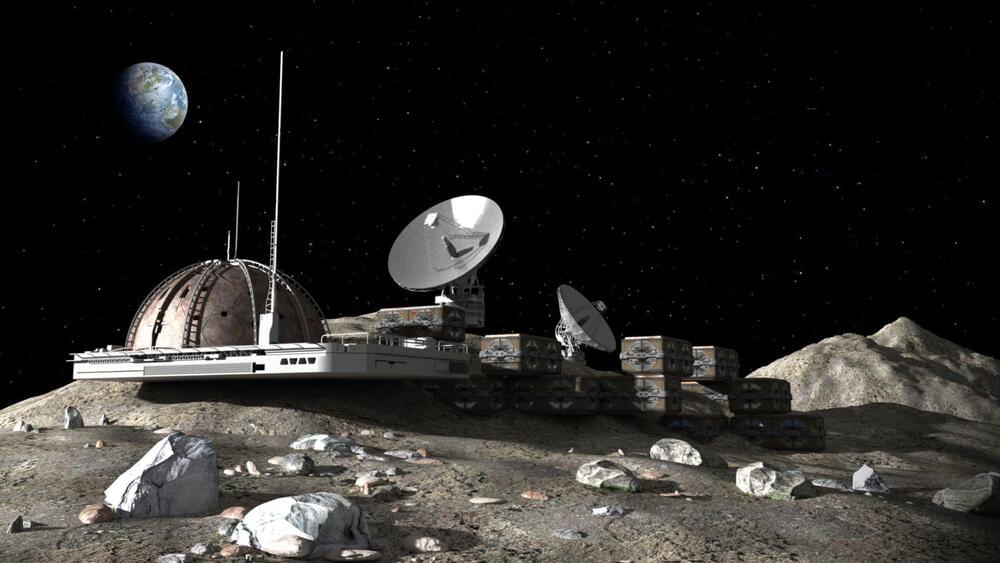NASA’s Orion spacecraft is on course for its return to Earth on Sunday, Dec. 11. The spacecraft made its second and final close approach to the Moon at 10:43…
Category: space travel – Page 152
LIVE View Artemis I Orion Flying Over The Moon (Angle 2)
Watch live as our mega Moon rocket launches an uncrewed Orion spacecraft on a six-week mission around the Moon and back to Earth. NASA is targeting Wednesday, Nov. 16, for the launch of the Artemis I Moon mission during a two-hour launch window that opens at 1:04 a.m. EST (0604 UTC). During #Artemis I, Orion will lift off aboard the Space Launch System (SLS) rocket, and travel 280,000 miles (450,000 km) from Earth and 40,000 miles (64,000 km) beyond the far side of the Moon, carrying science and technology payloads to expand our understanding of lunar science, technology developments, and deep space radiation. Through Artemis missions, NASA will land the first woman and the first person of color on the Moon, paving the way for a long-term lunar presence and serving as a steppingstone to send astronauts to Mars. We are going.
PLEASE SUBSCRIBE!! https://www.youtube.com/user/SteviePAX
Become a Channel Member https://www.youtube.com/channel/UCNj6DsIsOi-DHORB-0MGlGQ/join.
INSTAGRAM-https://www.instagram.com/steviepax/?hl=en.
TWITTER-https://twitter.com/steviepax

World’s first space battery powered by ‘game-changing’ nuclear fuel is coming soon
Americium-241 emits power for more than 400 years.
The world’s first space battery fueled by Americium-241, a nuclear-based fuel, will be developed in cooperation between the National Nuclear Laboratory (NNL) and the U.K. Space Agency.
This project will be carried out in a brand-new laboratory in Cumbria costing £19 million ($23 million) and outfitted with cutting-edge machinery and technology, according to a joint press release by NNL and the Space Agency on Friday.
“For the past 50 years space missions have used Plutonium-238 to stop spacecrafts from freezing, but it is in very limited supply,” said professor Tim Tinsley, account director at NNL.
National Nuclear Laboratory.
This project will be carried out in a brand-new laboratory in Cumbria costing £19 million ($23 million) and outfitted with cutting-edge machinery and technology, according to a joint press release by NNL and the Space Agency on Friday.
Orion Skip Maneuver
Ever skip stones across a pond? Imagine doing it with a spacecraft.
When NASA’s Orion returns to Earth on Dec. 11 at the end of the Artemis I mission, it will attempt a guidance and control maneuver called a skip-entry – the first time a skip entry maneuver will be attempted for a human spacecraft.
While it’s not a perfect analogy, Orion will mimic a stone skipping across a pond by dipping into the Earth’s atmosphere, skipping out, then re-entering. Performed by the crew module, this maneuver gives Orion more space to travel before splashing down, allowing it to be more precise with where it lands.
Japanese billionaire unveils the 8 artists he’ll fly to the moon on SpaceX’s Starship dearMoon flight
A Japanese billionaire picked his crewmates for the first-ever artist-centered mission.
Yusaku Maezawa, who made his fortune as an online fashion retailer, announced the eight people who would be flying with him on the dearMoon mission, which aims to use a SpaceX Starship to fly around the moon as soon as next year.
Full crew for SpaceX’s privately funded moon mission announced
Japanese fashion mogul Yusaku Maezawa has picked eight passengers that he said will join him on a trip around the moon, powered by SpaceX’s yet-to-be-flown Starship spacecraft. The group includes American DJ Steve Aoki and popular space YouTuber Tim Dodd, better known as the Everyday Astronaut.
The mission, called Dear Moon, was first announced in 2018. Maezawa initially aimed to take a group of artists with him on a six-day trip around the moon but later announced he had expanded his definition of an “artist.” Instead, he said he would be open to people from all walks of life as long as they viewed themselves as artists, Maezawa said in a video announcement last year.
Joining Maezawa, Aoki and Dodd will be Czech multidisciplinary artist Yemi A.D., Irish photographer Rhiannon Adam, photographer Karim Iliya, Indian actor Dev Joshi, documentary filmmaker Brendan Hall and South Korean rapper Choi Seung Hyun, who goes by the stage name T.O.P.

Meet the dearMoon crew that will fly on SpaceX’s Starship
Yusaku Maezawa announced the 8 crew members and 2 backup crew members for a trip around the moon aboard SpaceX’s Starship.
Credit: dearMoon.
Meet the dearMoon Crew!
Meet the crew joining Yusaku Maezawa on this lunar mission aboard SpaceX’s Starship.
Wow! See Artemis 1 spacecraft’s Earth-moon transit view in amazing time-lapse
On the 13th day of the Artemis 1 mission, the Orion spacecraft captured Earth slip behind the moon. The footage and has been time-lapsed and looped here.
Credit: NASA | edited by Steve Spaleta (https://twitter.com/stevespaleta)